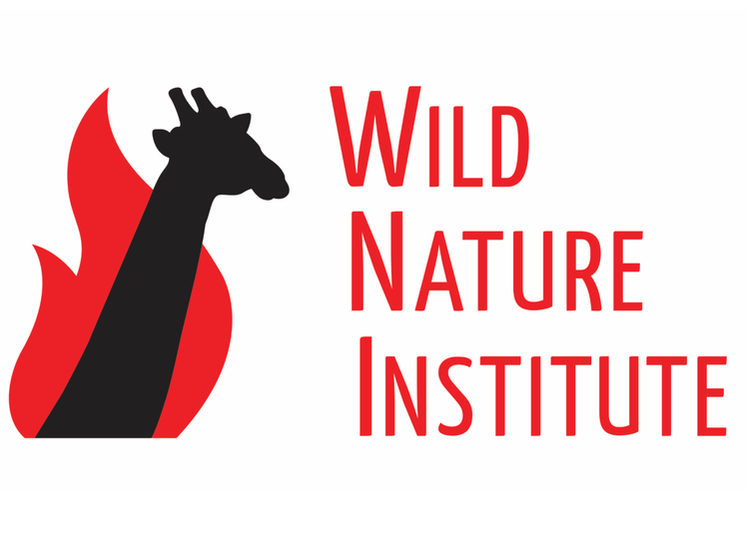The biologist terrifying the US Forest Service and the timber and forest fire-fighting industries by Derek E. Lee /originally appeared on Mongabay on 29 August 2016  The U.S. Forest Service, which manages 11 million acres of public forest land in California’s Sierra Nevada, is publishing a new California spotted owl conservation strategy and also revising its forest management plans for Sierra Nevada national forests. These documents will influence how all National Forests are managed for the coming decades, and they are dangerously misguided about wildfire. Monica Bond is a wildlife biologist who has spent the past 15 years becoming an expert on spotted owls and forest fires. Earlier this month, she published a paper summarizing all existing science about what happens to spotted owls when forests burn, in the hope of averting a major US forest management policy mistake. The U.S. Forest Service, which manages 11 million acres of public forest land in California’s Sierra Nevada, is publishing a new California spotted owl conservation strategy and also revising its forest management plans for Sierra Nevada national forests. These documents will influence how all National Forests are managed for the coming decades, and they are dangerously misguided about wildfire. Bond was trained by Dr. Rocky Gutiérrez, the godfather of California spotted owl research, and she wrote her first scientific article about forest fire effects on spotted owls with Dr. Gutiérrez in 2002. “Everyone expected fire to be bad for owls, but the data showed no effect on survival, reproduction, or site occupancy,” Bond said in a phone interview. “Our data showed fire wasn’t the owl-eating monster we had all believed it to be.” But that first success didn’t satisfy Bond’s tenacious drive to learn every detail about owls and fire. She started her own independent research organization, the Wild Nature Institute, and spent the next decade and a half investigating every aspect of forest fire and spotted owl ecology. She published eight more peer-reviewed scientific papers, several popular magazine articles, and built up a network of other biologists who shared her open-minded curiosity about how nature works. Managing for spotted owl habitatSpotted owls are the main indicator species for Forest Service management practices. The status of spotted owls is supposed to tell the Forest Service how their management activities affect old-growth species, thus how well the Forest Service is doing at managing old-growth forest. More than 90 percent of the old-growth forest that once existed in California is gone, logged away during the timber rush of the 19th and 20th centuries. The last bit of old growth on Forest Service lands is mostly spotted owl habitat. In 1993, the Forest Service began managing for spotted owl habitat, implementing standards intended to reduce logging in owl territories, though cutting trees was still allowed. Since then, populations of spotted owls have crashed all across Forest Service lands in California. Conversely, spotted owl populations are stable in National Park Service lands. Both Forest Service and Park Service lands have large wildfires, but Park Service lands are not logged. Logging is clearly the driver of spotted owl declines, as tree cutting has degraded 1.2 million acres of the Forest Service land in the Sierra Nevada between 1994 and 2014. In Bond’s summary paper, she presents a data-driven narrative describing how forest fires, including big, severe fires or “megafires,” have no strong negative effects on spotted owls. For example, in the largest and most comprehensive Sierra Nevada study to date, surveys for owls in and around six megafires showed burned and unburned spotted owl sites had the same likelihood of being occupied by owls — even after about a third of the forest in their territories had burned at high severity. “The lack of effect was remarkable because we found it over and over again,” Bond said. “We kept digging into different aspects and the story didn’t change. Owls suffered much greater harm from pre- and post-fire logging, not from fire.” The summary paper explains that most breeding territories continue to support spotted owls even after high-severity fire as long as the blackened forests are not logged to remove fire-killed trees. Owls hunt for small mammals in the most severely burned forests because rodent populations boom in high-severity burn patches. The scientific results made perfect sense when examined in light of the evolutionary history of the Sierra Nevada. Forest fires in the west are almost always mixed severity, meaning they include some large patches of high-severity fire. “The increased abundance and biodiversity of plants and animals in high severity burns tells us the Sierra Nevada’s flora and fauna evolved with regular high-severity fires,” Dr. Richard Hutto of University of Montana’s College of Forestry and Conservation said in a phone interview. “High-severity fire is as natural and necessary to forest health as rain or sunshine.” However, Bond’s results were troubling to the Forest Service and the scientists on their payroll. The new California spotted owl conservation strategy was written entirely without consulting Bond. A forest oversight organization asked the Forest Service on multiple occasions to include Bond, but those requests were rejected. The “ever-escalating and unwinnable war on fire”The Forest Service gets billions of taxpayer dollars each year to fight fires, and hundreds of millions more to administer sales of trees on public lands to timber companies in the name of reducing fire risk. The Forest Service has capitalized on public fear of forest fires to bleed the US Treasury in an ever-escalating and unwinnable war on fire. The Forest Service burns through $2-4 billion taxpayer dollars every year fighting forest fires, but studies repeatedly show that weather alone drives the biggest, hottest fires each year that burn 95 percent of the fire-affected acreage and consume 85 percent of the firefighting budget. Forest Service research has shown how easy and effective it is to fireproof homes, structures, and communities by building or retrofitting with fire-resistant materials and managing vegetation within 500 feet of buildings without ever touching the forest beyond. The reality is that thinning fuels like downed trees and dry brush outside towns doesn’t stop the big, hot, weather-driven fires. The recent King Fire and Rim Fire blasted through thinned and logged lands at high severity, so what’s motivating the Forest Service plan for widespread logging? The obvious motivation of the Forest Service in vilifying forest fire and offering logging as the solution is that their budget swells under this scenario. If the public were aware that fires are natural and necessary, owl populations are not seriously harmed, and homes and communities are easily protected without logging or backwoods firefighting, the Forest Service is out of a job, or at least looking at massive budget cuts. The three studies to examine how logging affects spotted owls found clear negative impacts from fuels reduction thinning. At the same time, Bond’s summary outlines thirteen scientific papers that found no strong negative effects of high-severity fire on spotted owls. Several recent studies documented decades of spotted owl population declines on Forest Service lands that continue to be logged, but stable populations on unlogged Park Service lands. Yet the Forest Service is promoting logging under the pretense that logging will save the owls from fire. There is a saying, “Where California goes, so goes the nation.” US forest policy for the next few decades is about to be written. It promotes widespread logging on public, taxpayer-owned forests. This logging is called fuels reduction or ecological restoration to disguise the greed behind the policy. The logging will be expensive, ineffective, and ecologically damaging, and it will be paid for by the taxpayers of the USA. Bond concluded: "Our California forests produce $9.5 billion in water supply annually. California’s forests also support 38,000 outdoor recreation-related jobs, and only 2,000 timber and biomass jobs each year. In 2011, the last time the agency compared the GDP impact of all its multiple uses, recreation had a $13 billion impact on GDP, vs. forest products’ impact of $3 billion. The vast majority of California’s timber comes from private timber company lands already, so let’s stop logging on public lands. We must demand no more logging on US Forest Service lands until spotted owl populations recover. Spend that money on fire-proofing homes instead.” CITATION
0 Comments
Your comment will be posted after it is approved.
Leave a Reply. |
Science News and Updates From the Field from Wild Nature Institute.
All Photos on This Blog are Available as Frame-worthy Prints to Thank Our Generous Donors.
Email Us for Details of this Offer. Archives
July 2024
|
|
Mailing Address:
Wild Nature Institute PO Box 44 Weaverville, NC 28787 Phone: +1 415 763 0348 Email: [email protected] |
|

 RSS Feed
RSS Feed
